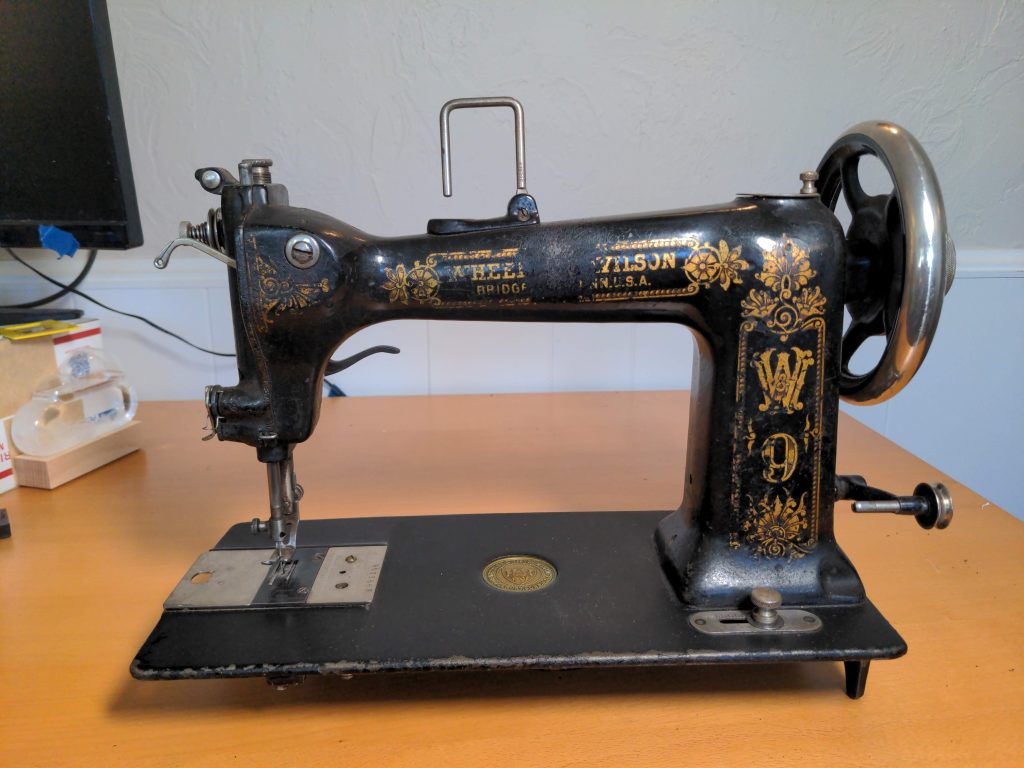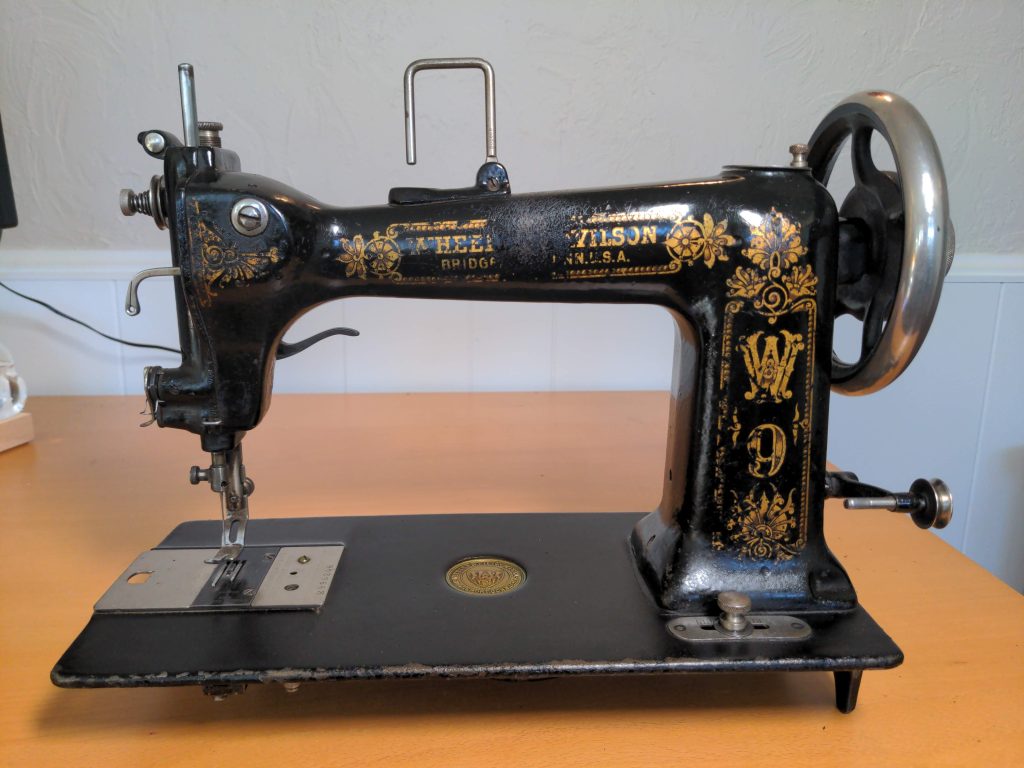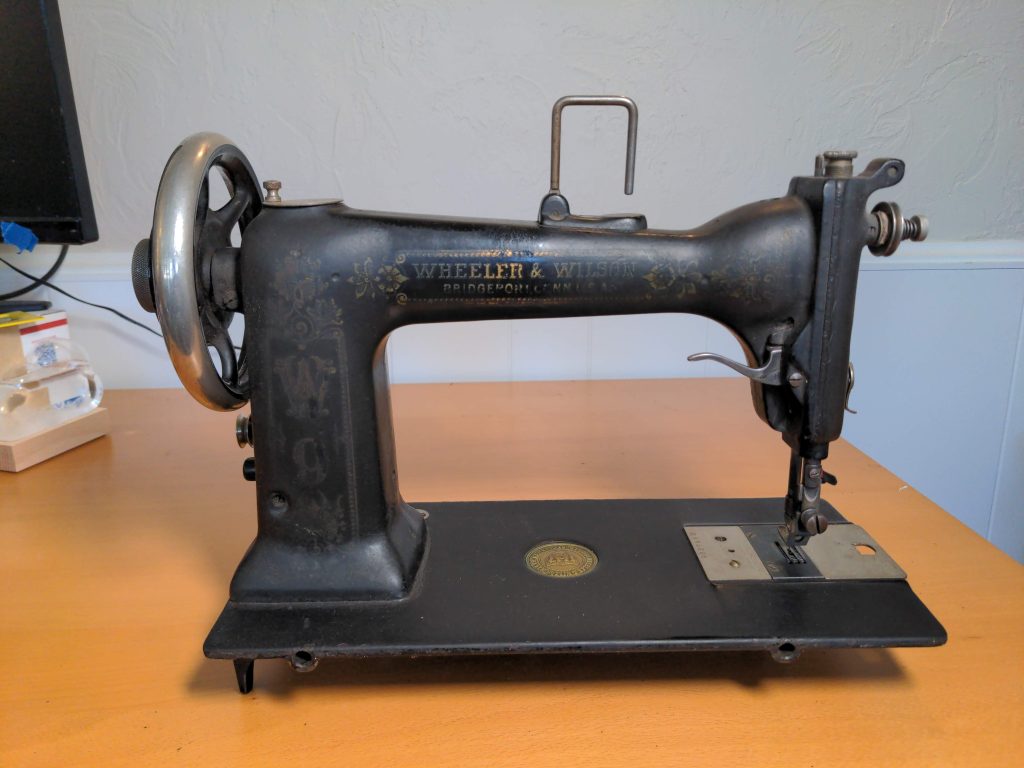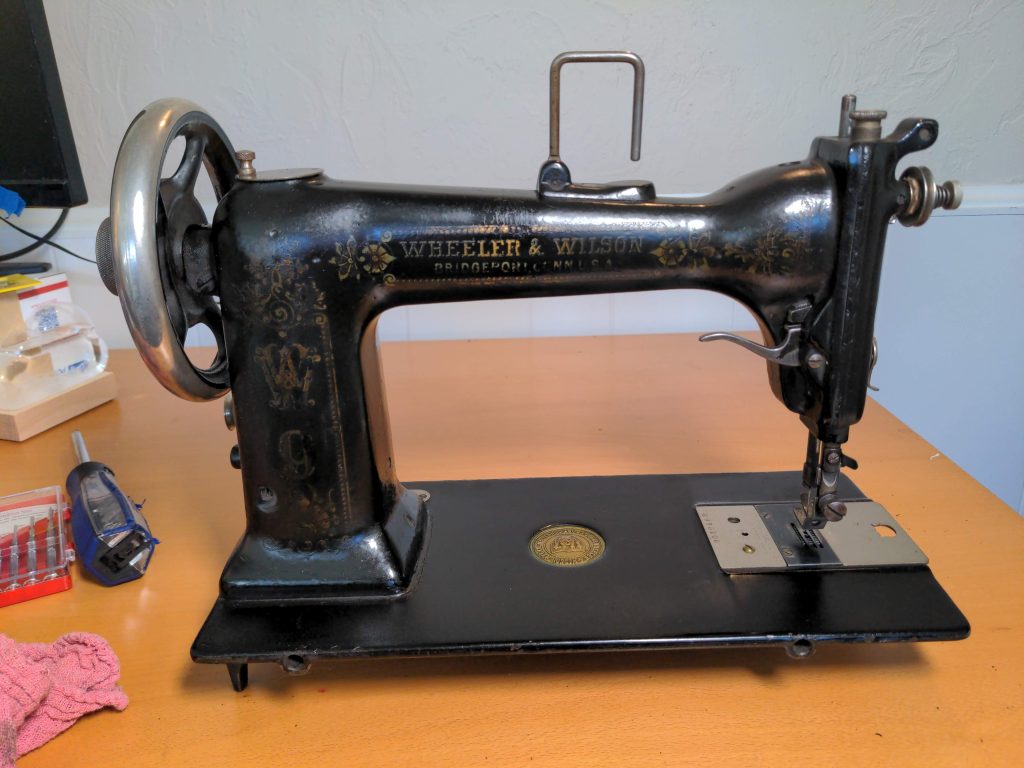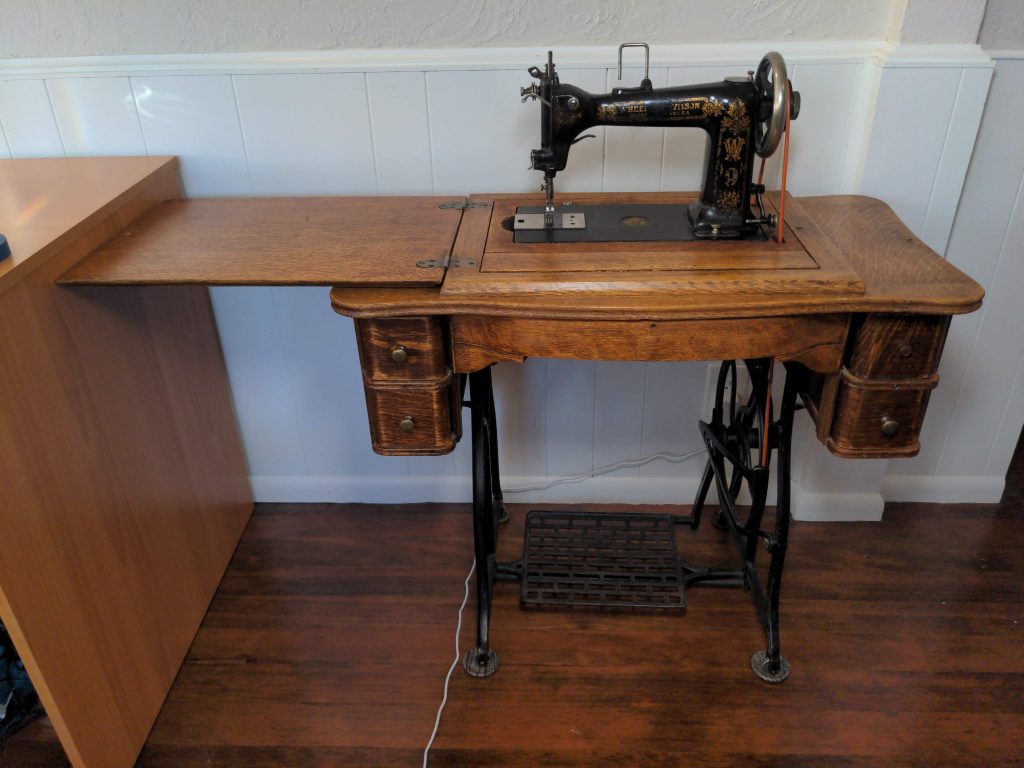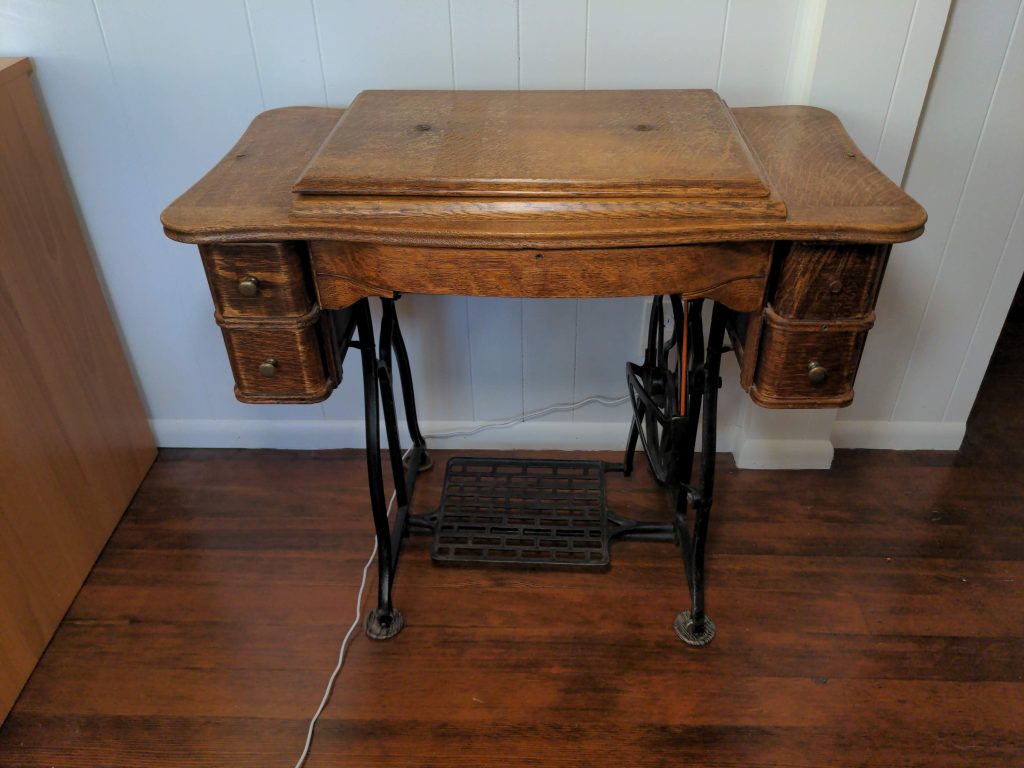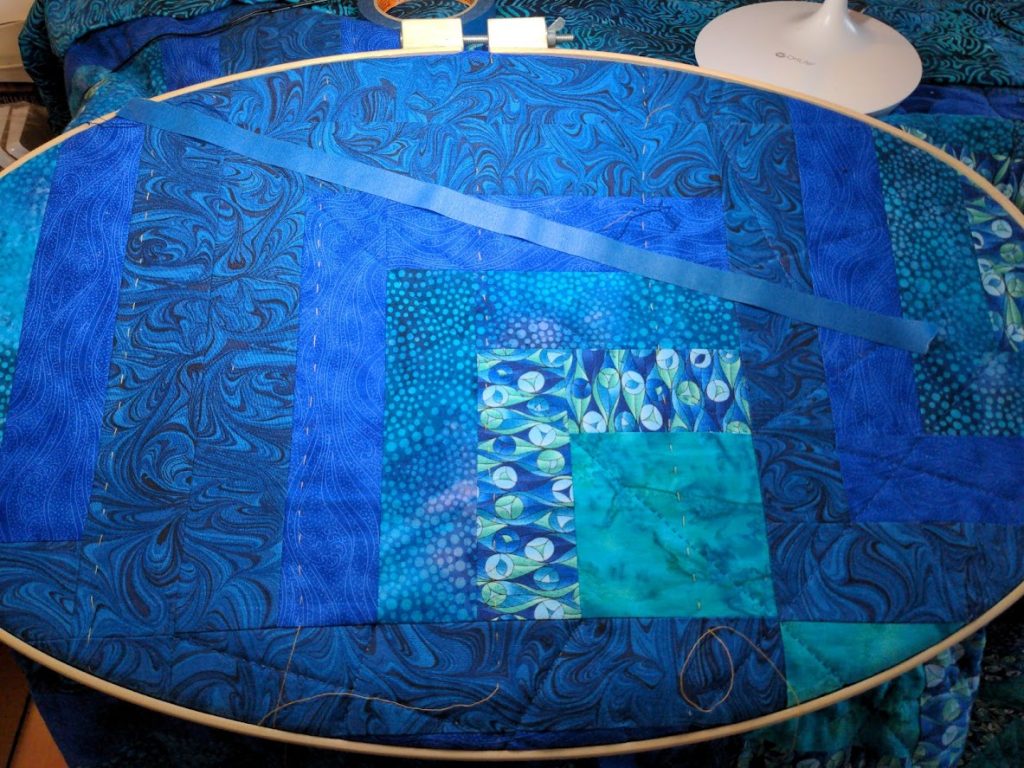
this is because I bought three quart bags of triangle scraps from Seattle Recreative for $0.50 each. I went there looking for somewhat larger scraps, as I’ve been wanting to try a scrappy/crazy quilt project but haven’t yet generated enough scraps of my own. Unfortunately most of the bags of larger cotton scraps contained decidedly Christmas fabric (yes, even the green scraps) so this was my best bet… and $0.50!
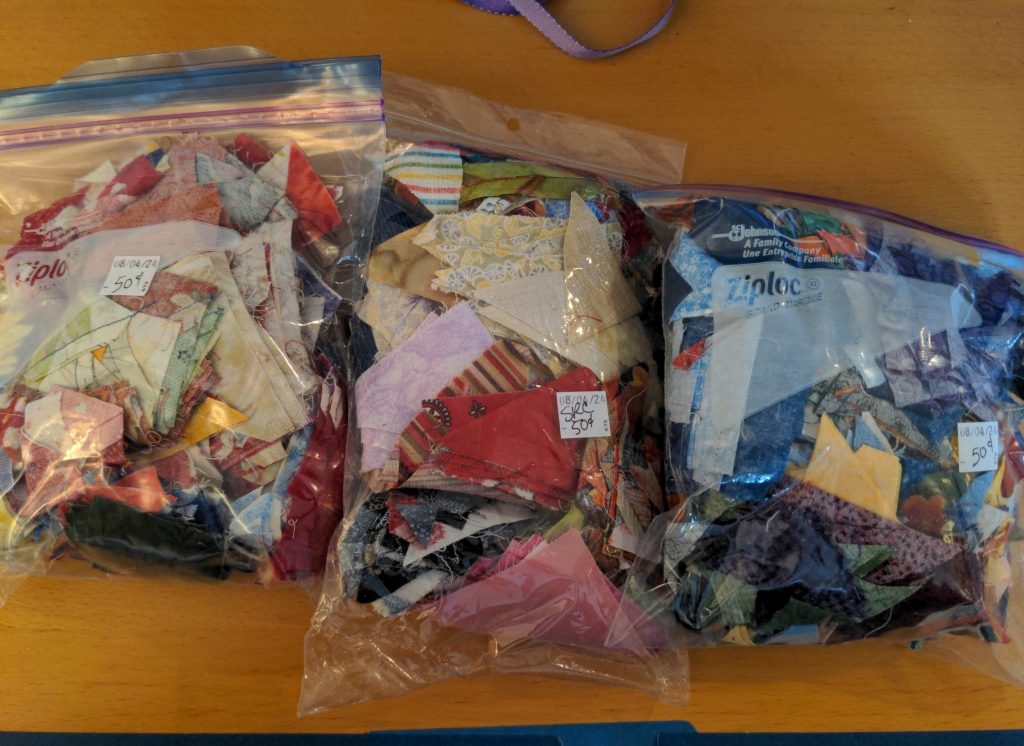
I have been sorting through the bags and finding some pre-sewn squares as well as a great many right or right-ish triangles. Unfortunately, triangles this size tend to skew when sewn together and don’t have a graceful seam allowance for machine sewing. So I am experimenting with English Paper Piecing a lot here, since it lets me hand-correct for neat angles as I sew.
The process starts with me basting each square to a piece of card so I can make sure the diagonal is exactly on the diagonal of the card… even a millimeter off true gets really obvious, which is why I have not historically quilted triangles! After that, each fabric-wrapped card gets whipstitched to its neighbors through the small amount of extra fabric around the edges of the card.
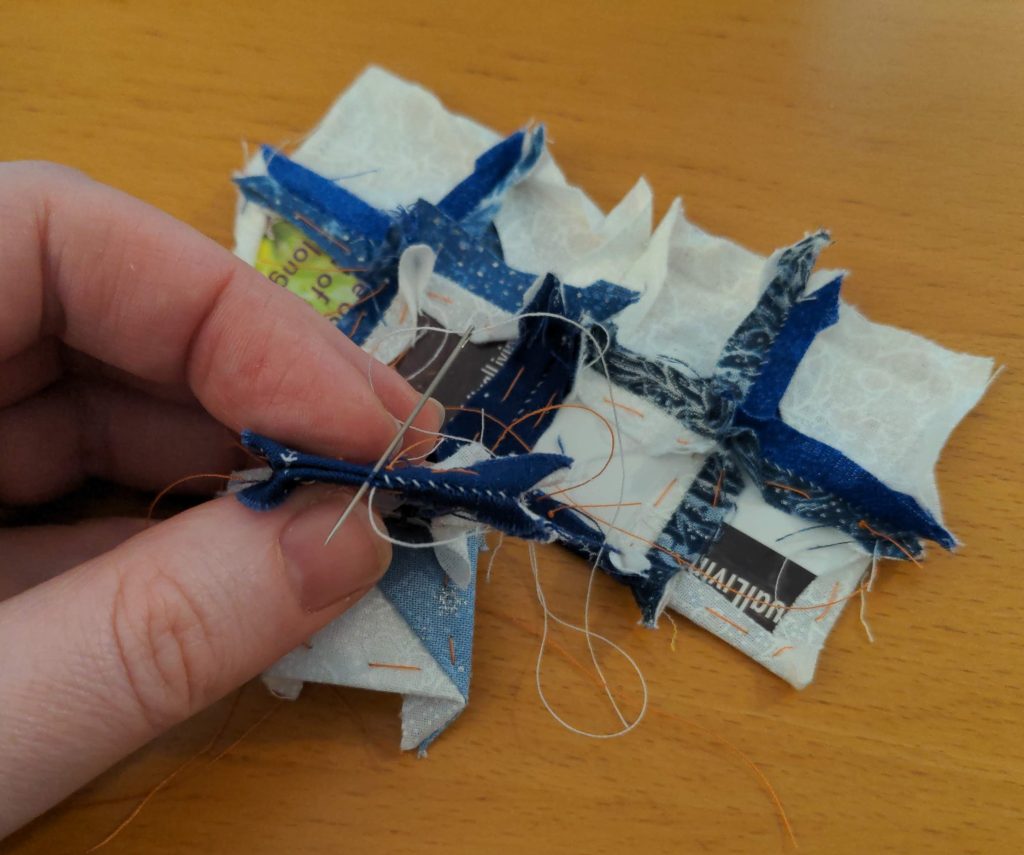
After you stitch together all the borders needed for a given card, you can remove the basting thread and are left with just fabric. The backs are pretty lumpy because there’s places with 6+ layers of fabric all bunched up together, but that should even out okay when it’s pieced into a quilt top and quilted down over batting.

I’ve been using these little squares as a chance to try out designs based on rotations. I’m only partway through my second block (the blues) but the design process is really fun. I have also looked up historical block patterns to see how many I can hack together out of scrap triangles.
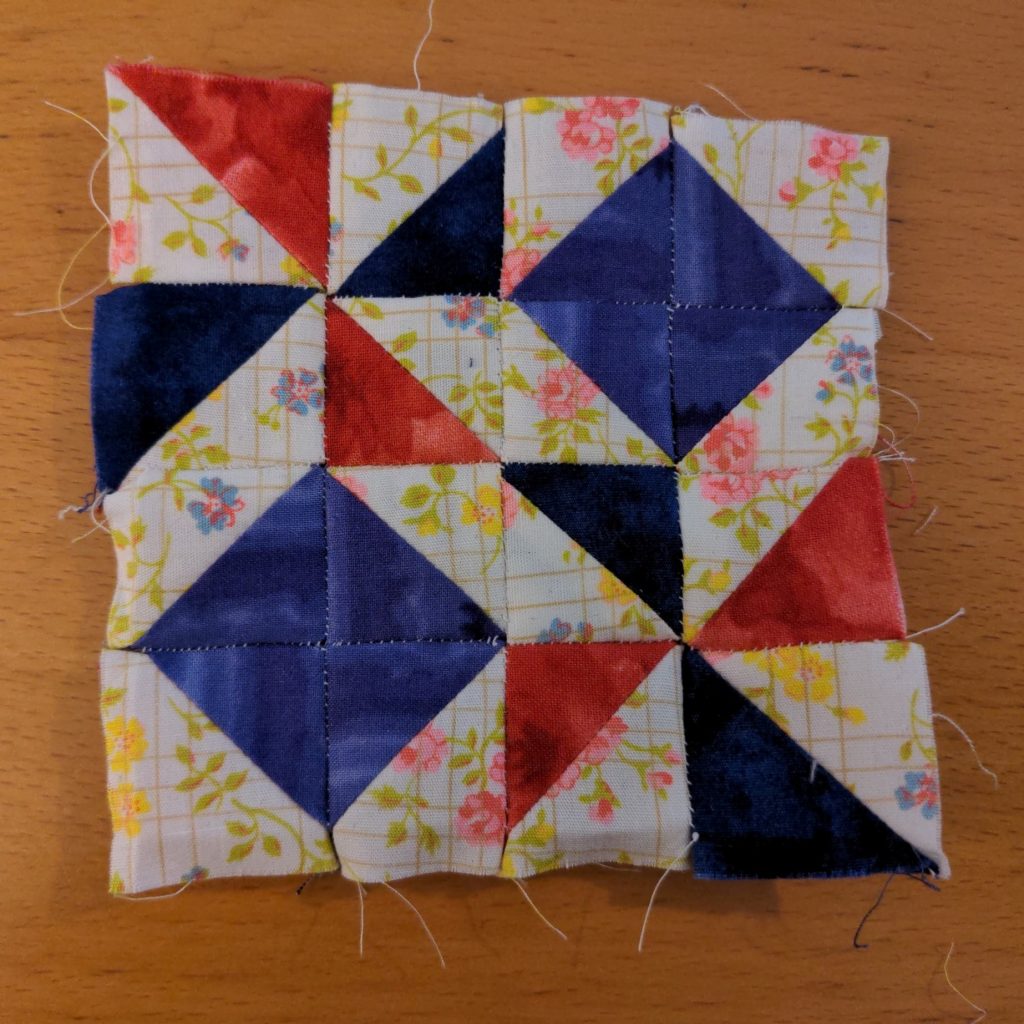
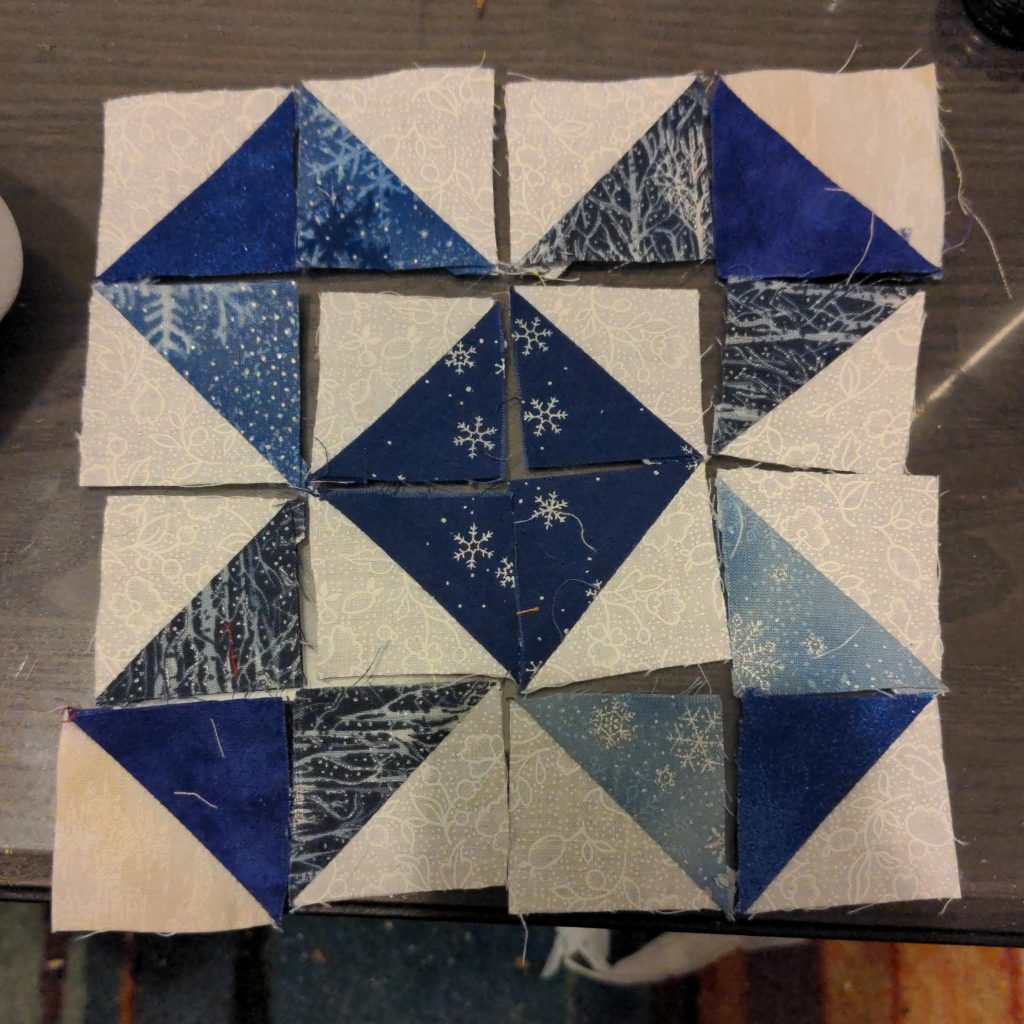

Due to the decidedly inconsistent quantities I have of any given color of triangle, I am going to have a pretty haphazard selection of shapes and styles of blocks, and many may end up as color vibes (like the blues and whites block above) rather than Exactly The Same Fabric in all the color locations. The quilt blocks will also vary in size, so in order to turn all the blocks I make into a lap quilt I will probably add borders to different sized blocks in order to even them out for sewing together into a more unified quilt.
